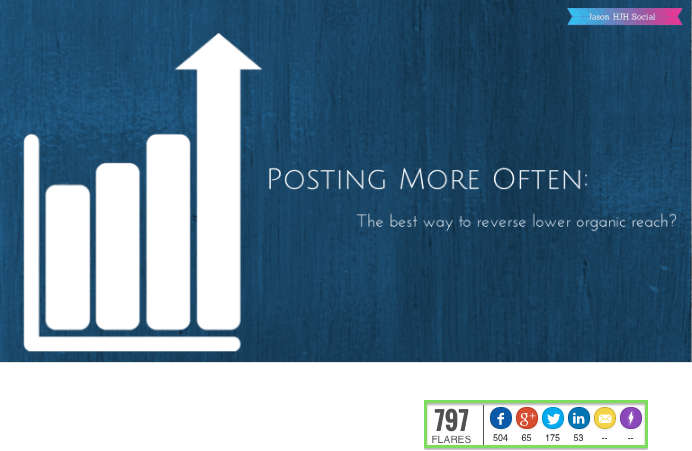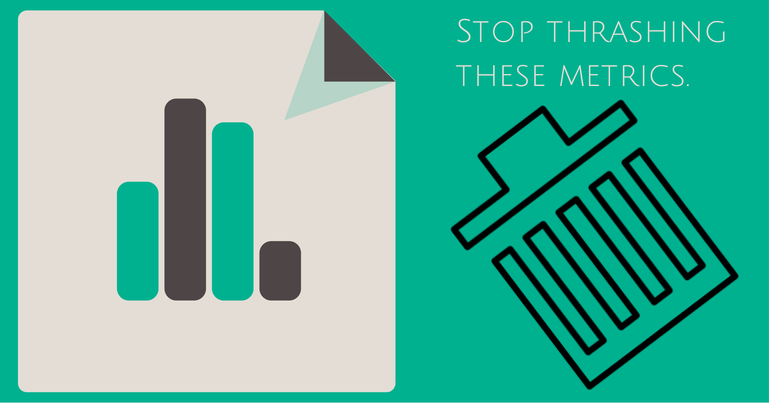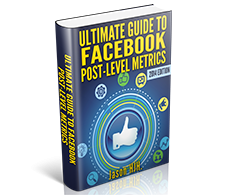Rafael and I had a good chat about metrics recently.
We agreed on the idea of having two sets of metrics: external and internal.
External metrics refer to those numbers you report to your management team or client. These metrics often link to business activities and the bottom-line, like increased revenue or cost savings.
Internal metrics refer to numbers you track for analysing and taking actions. These actionable metrics might not relate directly to your business bottom-line, but it helps you evaluate your strategies objectively.
A good example is your content strategy.
I use numbers that do not show how much revenue I gain from writing each piece of content, but these numbers tell me whether my content is doing well. They also separate the good content from the bad, and these help me compare the performance of different pieces of content easily.
These help me to learn what my readers like and what keeps them coming back.
One of the metrics I love to use to evaluate my Facebook content strategy is [how many people interact with your content more than once a week]. You can read the comprehensive tutorial here.
Today, I will share a set of metrics which I use as part of my framework to evaluate the content I post on my blog.
Before I share with you what they are, I want to caution you against jumping into conclusions.
What conclusions?
Individually, these metrics have a lot of negative traits and they are one of the least useful when you look at them alone. It’s no wonder most marketers and gurus thrash them as if they existed to harm our businesses.
But when you combine them together as a set of criteria, they immediately become more useful than you had ever thought. So why do so many marketing professionals hate these metrics with a passion?
We’ll get to that in a minute. First, let’s get to know what these legendary metrics (sarcasm intended) are.
In no order of importance:
- No. of Page Views
- No. of Social Shares
- Time Spent on Page
The real reasons why marketing professionals hate these metrics with a passion
Let’s get to it.
1. No. of Page Views

Your website visitors land on your page for many reasons. It could be:
- Genuine interest
- Misleading headline (like the one above)
- Accidental clicks on your link
Clearly, not everyone who lands on your page has interest in what you have in store for them.
Besides, marketing professionals have long blamed page views for its vanity allure and the lack of analysis value.
In other words, when page views are high, you celebrate. When page views are low, you have no idea why and thus you would not know what to do to improve it.
2. No. of Social Shares

The key reason against using this metric alone is not obvious, but easily understood once you are conscious of how you share content on social media.
Unless you are a highly disciplined person, you might find that sometimes you share a post in a blink of an eye without actually reading it.
This is one of the key reasons why the number of social shares alone is hardly a sufficient measure of how successful your content is.
Instead, it is a joint reflection of your headline, real content, and how influential you are. The more influential you are, the more likely people will share your content to make them “look good”.
3. Time Spent on Page

I am not sure if you are aware, but if you are tracking the time spent on page using Google (image above), you need take special care.
Cutroni, the guy at Google, wrote a very succinct post on this.
In short, if your website visitor visits only one page, Google is not able to track the time spent on that page unless you manually modified the page for it to record the time. (You can learn how to do that here and here. Bookmark these because they will take you some time to absorb and carry out.)
If your website visitors visit more than one page, Google will not track the amount of time spent on the last page (the page where your visitor left your site). Instead, it will only track the total amount of time spent on the previous pages leading up to the last page.
Sensing how difficult it is for the average marketing professional (unlike you) to add these codes to make sure that the time tracked is accurate, many gurus have jumped to the conclusion that the metric [Time Spent on Page] is inaccurate and simply not worth the time.
My proposed solution
The main reason I am for the idea of combining the use of all three metrics mentioned above is because when combined, they elevate the usefulness of these metrics.
In other words, these three metrics nullify (though not entirely) each other’s disadvantage and help to paint you a fairer picture of how your content is performing.
But how?
Looking at just a high number of page views, it is meaningless if most of the visitors clicked on your page by mistake or were misled by your impeccable (sarcasm intended) headlines.
But the possibility of both negative contributions to the number of page views is greatly reduced if the time spent on your page is also proportionately long for the length of your content.
For instance, if you typically write a piece of article that is more than 1,000 words and is highly technical, you can expect your visitors to spend anywhere between 10 to 30 minutes on your page. You can estimate this more easily if your content is in a video form - just take the length of your video as the benchmark!
Then what about the number of social shares?
Well…
You will never be able to get rid of black sheep and occasional bad habits that lazy human beings have cultivated all these years.
But a high number of social shares accompanied by a high number of page views and long time spent on your page should send a strong signal that you have really great content.
I am a wet blanket
Before you go away thinking you can now obsess over these metrics and be guilt-free, I would like to revisit three points I brought up earlier:
- The [Time Spent on Page] mechanism is still unfixed by Google and most other analytic platforms you might be using. My advice is to spend the time required, treat it as an investment, and fix them to make it as accurate as possible. If all else fails, pay someone else who knows how to do it and get it done. You don’t want to be misinformed by data, do you?
- These metrics combined tell you whether your content is a success. I would use them in a stringent way. In other words, if any of the three metrics say otherwise, then you should not report or see your content as successful
- These metrics are hardly actionable, but they are indicative. In other words, seeing a low page view count, time spent on your page, and number of social shares could point you to a very generic problem - your content is not good enough. But if you really want to find out why your content strategy is not working, you need more sophisticated data sets like tracking how much of your content are your website visitors consuming (try CrazyEgg for this)
Finally, this is just the tip of the iceberg, and you can expect to see loads of more information on choosing the right metrics for your business, not just for Facebook, but also for your content strategy.
If you are interested to learn how to get rid of Facebook content and ads that suck (i.e. how to analyse your data after picking the right metrics), do sign up for my newsletter and wait for my premium course coming this fall.




Pingback: Facebook marketing weekly review (July 18th 2014)